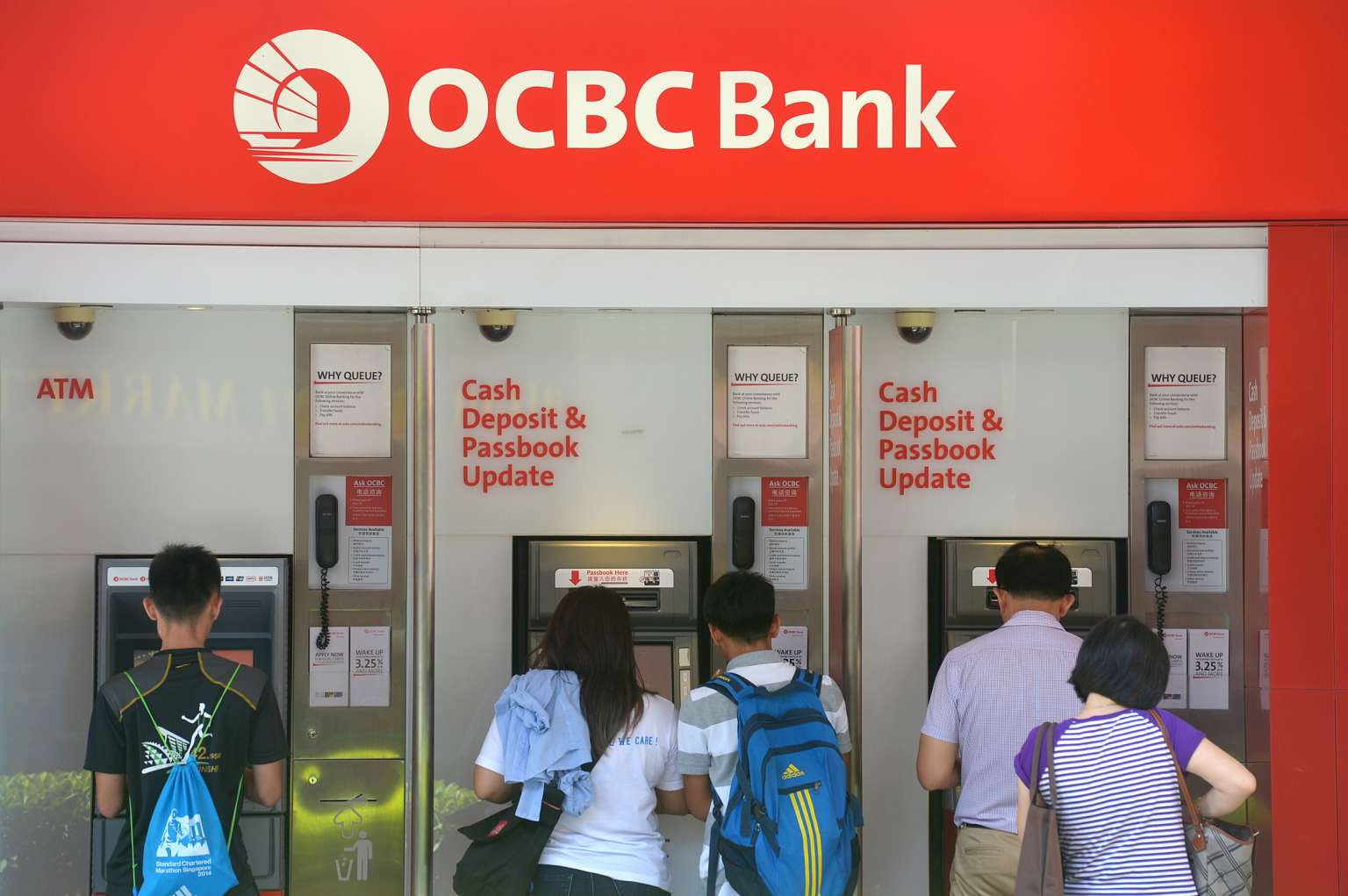OCBC Q3 earnings up 5%, beating forecasts, but asset quality remains stressed
Sign up now: Get ST's newsletters delivered to your inbox

Automated Teller Machines (ATM) of OCBC Bank at Tampines Central.
PHOTO: ST FILE
Wong Wei Han
Follow topic:
SINGAPORE - OCBC earnings grew in the third quarter due partly to improved performance of its insurance business, but core banking profit has weakened while asset quality issues persisted.
Singapore's second biggest lender said net profit came in at S$943 million in the three months ended Sept 30 versus a profit of S$902 million a year earlier, as profit contribution from Great Eastern surged 232 per cent to S$159 million.
Q3 earnings topped the average forecast of S$883 million from six analysts polled by Bloomber.
Non-interest income rose by 25 per cent to S$970 million, while fee and commission income was up 5 per cent to S$428 million on growth in wealth management income, OCBC said in its results announcement on Thursday (Oct 27).
However, excluding Great Eastern, OCBC's core banking profit was down 8 per cent to S$783 million compared with a year ago.
"The operating environment for the group remains challenging amidst weak economic conditions. We continue to keep a firm grip on cost, maintain strong liquidity and capital, and ensure prudent levels of provisioning," OCBC chief executive Samuel Tsien said.
Mr Tsien also warned that the non-performing loan issues tied to the struggling oil and gas sector have continued to deepen, even though no new stressed accounts emerged in the last quarter for OCBC.
Reflecting the business headwinds, its customer loans dropped 2 per cent year on year. This was not helped by further tightening of net interest margin to 1.62 per cent, the lowest since the first quarter in 2015. As a result, net interest income was down 6 per cent to S$1.23 billion.
Meanwhile, by the end of the third quarter, OCBC saw its non-performing assets rise to S$2.59 billion, up from S$2.49 billion a quarter ago. Non-performing loans ratio was 1.2 per cent, up from 1.1 per cent a quarter ago.
"The increase in NPAs primarily reflects the approach the group has taken since third quarter 2015 to proactively classify corporate accounts associated with the oil and gas support services sector, which has come under increasing stress as a result of persistently low oil prices," OCBC noted.
The credit risk profile of the previously identified stressed companies has worsened, and the bank had to set aside S$99 million for specific allowances in the third quarter, of which around a third was to cover for the oil and gas loans, Mr Tsien told reporters during the bank's results briefing on Thursday.
The higher allowances for loans put some strain on OCBC's core banking profit, which dropped 8 per cent in the third quarter compared to a year ago.
As at the end of September, OCBC had some S$14.1 billion exposure to the oil and gas sector, which has constantly made news this year as the oil price slump has landed several companies in financial troubles.
As a result, OCBC's NPL ratio climbed from 1.14 per cent in June to 1.19 per cent in the third quarter. This comprised 0.53 per cent of oil and gas NPL ratio, and 0.66 per cent in the rest of the sectors.
Mr Tsien believes that OCBC will see no new names coming into the stressed loan book going forward, but the oil and gas sector is not yet near a recovery, he said.
OCBC is the first of Singapore's Big Three lenders to report on third-quarter earnings. UOB wil do so on Friday, followed by DBS on Monday.

